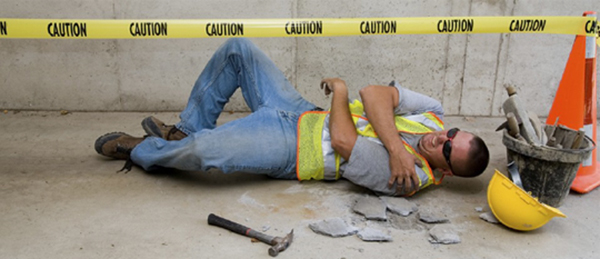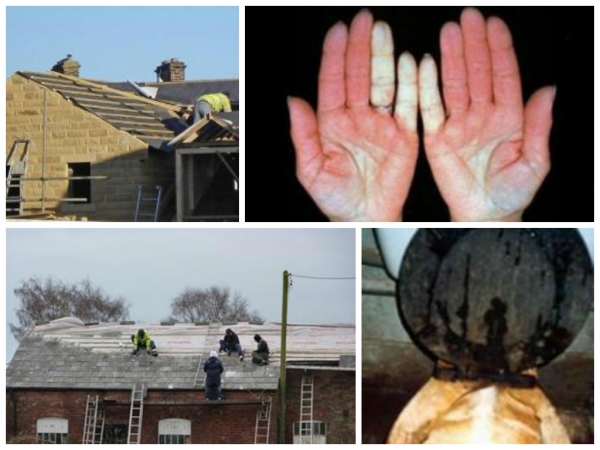
Basic Health and Safety Mistakes that are Crippling the Industry . . .
Posted on November 17, 2013
Poorly maintained or misused ladders
The majority of falls from height in the workplace are falls from ladders. Whether poorly maintained, not fit for purpose or incorrectly used (like these guys here with their makeshift trestle below). If a ladder is the right tool for the job, employers need to ensure it is n a safe condition to use. We must remember that a ladder is not right for every job. After assessing the risk, it may be that other equipment is more suitable. Ladders are best suited to low-risk and short duration work – nobody expects scaffolding for domestic window cleaning!
Exposure to deadly asbestos fibres
Though not used in construction any more, asbestos is still present in a lot of public buildings. It is a known and deadly threat that still claims in the region of 4500 lives each year; of people who were exposed around 35 to 40 years ago. Despite the risk being well known, people still proceed with cutting, drilling, sawing and breaking up materials that contain the hidden killer. Any worker likely to disturb asbestos while performing their normal, everyday work is required to have asbestos awareness training. We provide this essential training at no extra cost to Members, contact us for more information.

Dangerous work at heightMore enforcement action is taken by the HSE to tackle dangerous work at height than anything other area. Low and high falls kill and seriously injure hundreds of people each year. Time and again people are observed working on roofs or scaffolding without appropriate control measures; such as edge protection, fall prevention equipment or harnesses. Falls from height continue to be the most common cause of workplace fatalities. Do you think high viability jackets will come in handy should they fall off the roof? Unhygienic or non-existent welfare facilitiesYou’d think, in this day and age, that all workers could expect a decent place to use the loo and wash up. However, some of the workplace bathrooms and kitchen areas we have seen are similar to that of Victorian times! Among other things, employees should have access to clean toilets, wash basins, running hot and cold washing water, drinking water and a means to heat food; even when on construction sites!!! Another alarming find is that in some workplaces, employees don’t have anywhere to eat and drink; other than areas where others are working! Damage caused by vibrating power toolsHand-arm vibration syndrome (HAVS) and vibration related carpal tunnel syndrome are usually caused by using hand-held power tools and hand fed and guided machinery. HAVS can cause significant ill health, including painful disorders of the nerves and hands and finger joints. In severe cases, HAVS can lead to loss of hand movement and sufferers can experience severe pain if they get cold; making everyday tasks, such as gardening or washing the car, very difficult. Numbness and the inability to manipulate small objects can make getting dressed difficult too. Approximately two million workers are believed to be exposed to the effects of vibration, one million at a level which may harm them. By law, employers must assess and identify measures to eliminate or reduce risks from exposure, so that employees’ health is not damaged. |
